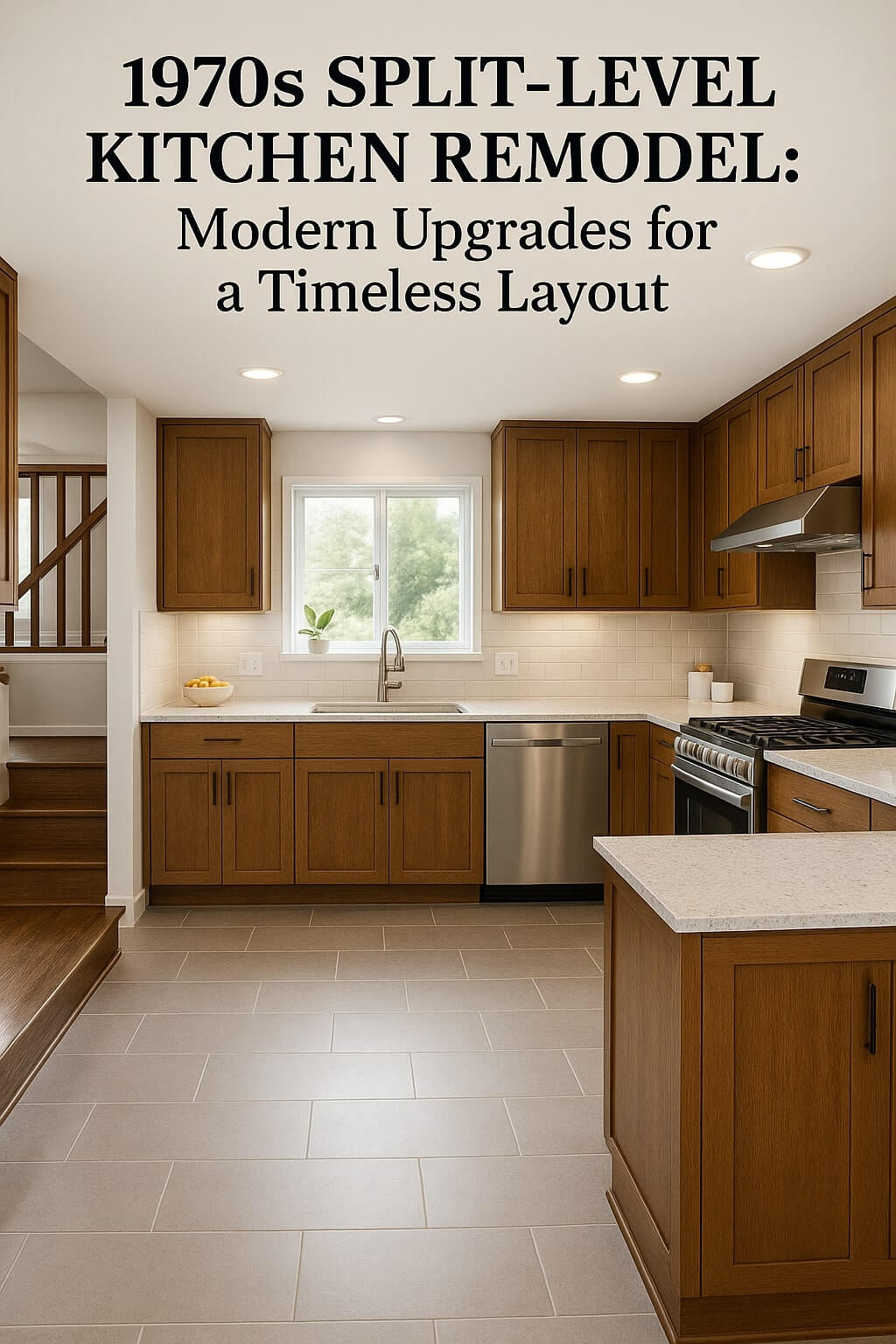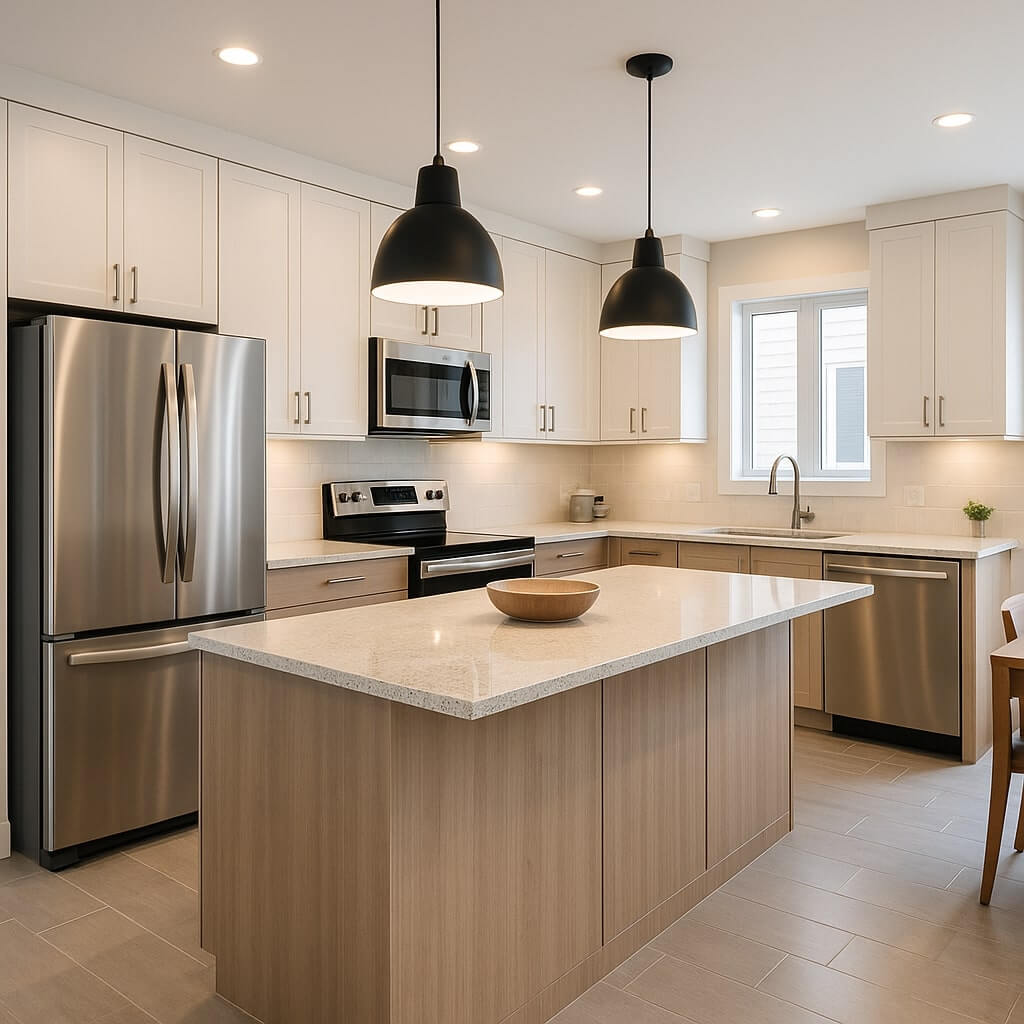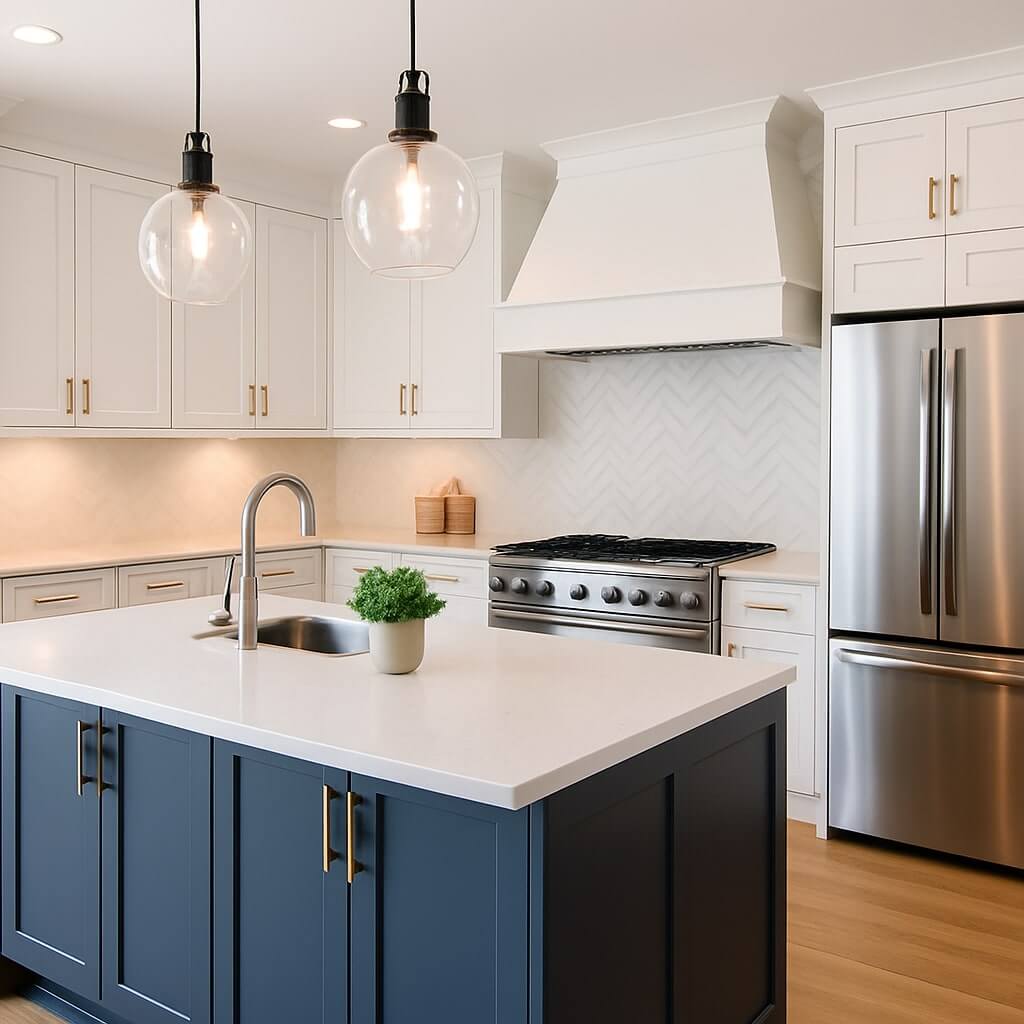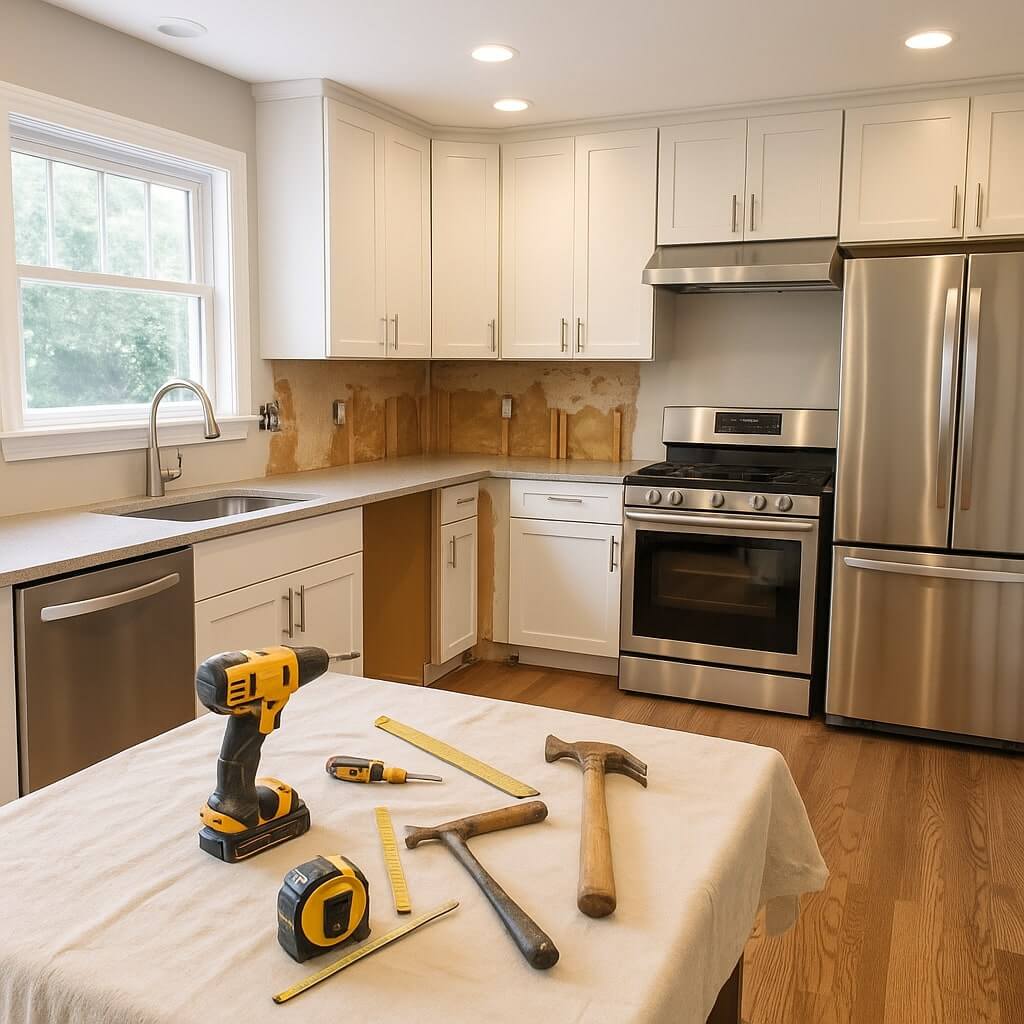The 1970s split-level home is a classic American design known for its multi-tiered layout and spacious interiors. However, kitchens from that era often feature outdated cabinetry, closed-off floor plans, and finishes that no longer suit today’s design preferences. Remodeling a 1970’s split-level kitchen is a chance to fuse retro charm with modern functionality—bringing light, flow, and updated style into the heart of your home.
Why Remodel a 1970’s Split-Level Kitchen?
Split-level homes often include a kitchen situated between two floors, creating both opportunities and challenges. While they may offer generous square footage, kitchens from this era often feel cramped and disconnected. Modern remodels aim to:
- Improve natural light and sightlines
- Create open-concept living spaces
- Upgrade outdated materials and appliances
- Enhance storage and efficiency
Key Design Challenges in 1970’s Kitchens
- Boxy Floor Plans
These kitchens typically have a walled-off layout that separates them from the living and dining areas. - Dated Finishes
Expect to find laminate countertops, dark wood cabinetry, and vinyl flooring—all needing replacement for a modern look. - Low Ceilings and Minimal Lighting
Recessed or dropped ceilings often limit light and make the kitchen feel smaller.
Modern Upgrades That Work Wonders
1. Open Concept Layouts
Removing non-load-bearing walls between the kitchen, dining, and living rooms can dramatically improve flow and natural light. For load-bearing walls, consider a pass-through or half-wall with structural support.
2. Contemporary Cabinets
Swap out heavy, dark cabinetry with sleek, flat-panel cabinets in neutral tones like white, gray, or natural wood. Add soft-close drawers and smart storage features to maximize functionality.
3. Quartz or Granite Countertops
Upgrade from laminate to quartz or granite for a durable, low-maintenance surface that adds visual appeal.
4. Modern Lighting Solutions
Install recessed LED lighting, pendant lights over islands, and under-cabinet lighting to create a bright, functional workspace.
5. Energy-Efficient Appliances
Opt for stainless steel, energy-efficient appliances that match your design while reducing utility costs.
6. Luxury Vinyl Plank or Tile Flooring
Replace outdated flooring with modern materials that offer durability, water resistance, and style.
Tips for Remodeling Success
- Respect the split-level layout: Keep the multi-tiered structure intact while opening up the kitchen area.
- Preserve vintage charm: Elements like original brick walls or exposed beams can be balanced with sleek upgrades.
- Work with a professional: Hiring a kitchen remodel expert with experience in split-level homes can prevent costly mistakes.
Before & After Inspiration
While every remodel is unique, common transformations include:
- Turning galley kitchens into open-concept chef’s kitchens
- Adding islands with seating and storage
- Using white or light cabinetry to open up smaller spaces Replacing soffits with taller cabinets or open shelving
Frequently Asked Questions (FAQs)
Costs can range from $25,000 to $75,000 depending on layout changes, materials, and labor. Structural work or high-end finishes will raise the price.
Yes, but consult a structural engineer or contractor. Some walls may be load-bearing and require reinforcements like beams or columns.
Use lighter colors, open shelving, glass cabinet doors, and remove unnecessary walls. Strategic lighting and mirrors can also help expand the feel of the space.
Soft whites, warm neutrals, sage green, and navy blue are popular. These tones complement natural light and lend a timeless appeal.
If in good condition, exposed brick, wood beams, or mid-century cabinet hardware can add character and authenticity to your remodel.
Final Thoughts
A 1970’s split-level kitchen remodel is more than a cosmetic upgrade—it’s an opportunity to blend the best of retro architecture with modern design principles. By thoughtfully updating the layout, finishes, and features, homeowners can create a kitchen that is both stylish and functional, honoring the home’s history while meeting today’s needs.




